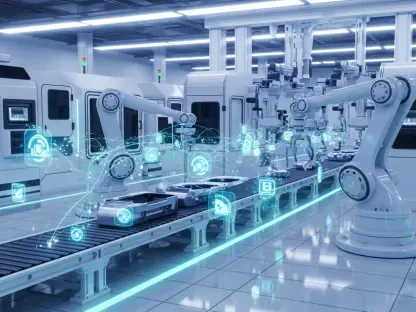In a building better known for imaging suites and operating rooms, a quiet shift has been turning clinical intent into manufactured reality with the speed and accountability normally reserved for an industrial plant, and the result is a round-the-clock service that converts physician orders into devices designed for one patient, one moment, and one critical decision. The idea sounds simple—3D print what a case demands—but the execution requires a clinical backbone and factory discipline. Instead of a hobby lab or a demo space, the Anatomic Modeling Unit functions as a clinical utility that starts with an order in the electronic medical record and ends with a sterilized, validated tool in the operating room. The value proposition is blunt and measurable: fewer surprises, clearer plans, and safer execution when the anatomy or the task is beyond routine. That proposition has been shaped by a radiology-led mindset and by neuroradiologist Dr. Jonathan Morris, whose argument is that this capability is medicine practiced by machines, not manufacturing masquerading as care.
From EMR to OR: A Controlled Hospital Factory
A physician order sets the line in motion, but radiology sets the tone. Imaging is acquired with manufacturing as the endpoint, not merely interpretation. That means thin-slice CT protocols—think 0.6 mm with the right phases for vascular or renal cases—and MRI parameters tuned to the structure of interest. With input quality controlled, the handoff to segmentation is clinical first and industrial second, ensuring structures are delineated in a way that respects surgical reality and printability. Engineers then adapt those data into models, guides, or accessories that will hold up under sterilization and at the moment of use. PolyJet might be chosen for multi-material anatomy, SLA for crisp guides, MJF for durable fixtures, FDM for quick jigs, and micro-printers for fine details—all deployed intentionally. The pipeline is traceable, documented, and audited so that each step ties back to the initial order and forward to the device on the back table.
What makes this more than a lab is the operating model. An 18-person, cross-disciplinary team staffs segmentation, design, production, post-processing, and metrology, with shift coverage that allows work to progress without pause. Wash, cure, depowdering, and inspection tools sit alongside the printers, and every machine is treated like a production asset whose uptime matters. The output is not dropped on a cart and forgotten; it is measured, inspected, and sterilization-validated, then released with the right labels and documentation for the surgical team. That rigor is not bureaucratic theater. Guides fitting to sub-millimeter tolerances are useless if they warp in sterilization or if drizzle lines from a miscalibrated printer shift a drill hole. The system is tuned for repeatability, and if a device does not meet spec, the team can re-run the job overnight and still make the case. It is a factory with clinical soil, but the cadence is hospital time.
When 3D Printing Matters Clinically
Selectivity is a feature, not a limitation. The team does not print a model for every case because a model is a tool, not a trophy. If the added information will not change a plan, compress a learning curve, or reduce risk, the right answer is to skip it. In contrast, when the anatomy is unusual, the approach is high-stakes, or the margin for error is thin, the calculus flips. Tactile models help newer surgeons build mental maps faster and let seasoned surgeons rehearse in three dimensions before committing to a cut. The value shows up in time saved, exposure reduced, and hesitations eliminated. It also appears in the quiet confidence of a team that knows where it is going and why. That confidence is not sentiment; it is an operational hedge against uncertainty under bright lights and tight clocks.
Take reconstructive work such as mandible reconstruction guided by fibula transfers. Preoperative models allow osteotomies to be planned, cutting guides to be shaped to bone, and fixation to be rehearsed so that contours match both function and form. In vascular, maxillofacial, and orthopedic domains, printed guides help align drilling and cutting paths with the plan instead of relying on mental reconstruction alone. Notably, those gains are not universal or automatic. Experienced surgeons can navigate routine anatomy without plastic on the table, and the team respects that. The gate is appropriateness, not enthusiasm. When a case meets the threshold, the model or guide becomes a lever that shifts risk and clarity in the right direction. When it does not, the capability remains idle by design, ready for the next scenario that warrants physical insight.
Devices Industry Won’t Make—and Quality That Makes Them Safe
The newest frontier is not just models but devices that standard catalogs do not contain. Consider external breast prostheses that are lighter, lattice-structured, and matched to the patient’s anatomy; they address comfort and symmetry in ways off-the-shelf options cannot. Or look at radiation oncology, where patient-specific boluses and mini-beam collimator adapters shaped to surface and target geometry help sculpt dose while sparing skin. These are small-batch, high-need items that do not pencil out for a traditional product line, yet they carry meaningful clinical benefit. Point-of-care fabrication fills that void, and because it lives within medical practice, feedback loops are immediate: a clinician can describe a necessary tweak, and a revised device can arrive in a day, not a quarter.
That speed would be irrelevant without quality that stands up to scrutiny. The unit runs like a factory with a quality system that ties radiology protocols to segmentation control, printer parameters to batch records, and post-processing to metrology and sterilization validation. Sub-millimeter variance—around 0.8 mm on validated guides—sets a bar that fits surgical reality, and every step is logged so that the chain from EMR order to sterilized tray is auditable. The team partners with industry for implants such as titanium plates, leveraging those supply chains and regulatory clearances where appropriate. Yet the planning, tooling, and patient-specific accessories remain in-house to preserve speed and specificity. The hybrid model keeps patient focus front and center: use commercial strength where it adds value, and manufacture at the bedside where the market will not tread.
Operations, Regulation, And Payment Realities
Reliability is the unglamorous work that keeps the promise. Most polymer 3D printers are not engineered for mission-critical redundancy or hospital schedules, so the unit compensates. Capacity is over-provisioned; machines are treated “like antique cars,” maintained more aggressively than vendor prescriptions; and staff train to factory technician standards. Two identical printers can drift apart; consumables can vary; wash and cure systems can introduce subtle errors. By building in preventive maintenance, calibration routines, and spare throughput, the team protects surgical starts from machine whims. The same philosophy extends to downstream steps: depowdering, support removal, curing, and dimensional inspection are standardized because a great print can be ruined by sloppy finishing. Overnight runs, weekend shifts, and rapid reprints are normal, not exceptions.
The regulatory posture is pragmatic and well defined. This is the practice of medicine for internal patients, not a device business. Patient-specific class II sterilizable tools and accessories are produced under the clinic’s quality system, while implants continue through established industry channels. Close dialogue with regulators has clarified what hospitals can responsibly make at the point of care, and those conversations have informed broader guidance. On payment, the effort helped establish Category III CPT codes to track utilization and outcomes, a necessary bridge toward evidence-based Category I status. Reimbursement remains a lagging indicator by design; clinical appropriateness leads, billing follows. Vendors have a clear role to play if this model is to scale widely: build more reliable, serviceable, OR-ready hardware, and standardize post-processing in ways that reduce the need for hospitals to replicate factory labor on clinical floors.
Scaling The Hospital Factory Mindset
The next wave of value required more than faster printers; it demanded standardized inputs, shared datasets, and clearer appropriateness criteria so teams across service lines knew when to pull the 3D lever and when to leave it alone. Imaging protocols tuned for manufacturing became templates instead of one-offs. Segmentation rules matured into checklists that any trained specialist could follow and audit. Outcomes data linked to CPT tracking codes started to show where models, guides, or accessories reliably shifted decisions or saved time, and where they did not. Those patterns suggested service-line playbooks—vascular, orthopedics, maxillofacial, radiation—that integrated point-of-care manufacturing without making it a ritual. In turn, that discipline created a cleaner signal for payers and regulators by tying device use to appropriateness and measurable impacts rather than enthusiasm.
Broader collaboration with industry also took on a more focused shape. Suppliers offering printers with hospital-grade uptime, on-site serviceability, and validated wash and cure cycles reduced the manpower hospitals needed to keep gear reliable. Consumable consistency and machine-to-machine calibration improvements cut variance and reprint rates. Meanwhile, registries that captured accuracy metrics, sterilization validation results, and clinical endpoints gave stakeholders a common reference point. The consequence was a calmer, more predictable operation that still moved at hospital speed. For systems considering this path, the practical steps were clear: invest in a cross-disciplinary team with factory skills, build a quality system that spans from EMR to sterilizer, harden imaging and segmentation as manufacturing inputs, and set a conservative gate for when to print. With those foundations, the hospital factory ceased to be a novelty and became another instrument that clinicians used when it mattered most.









